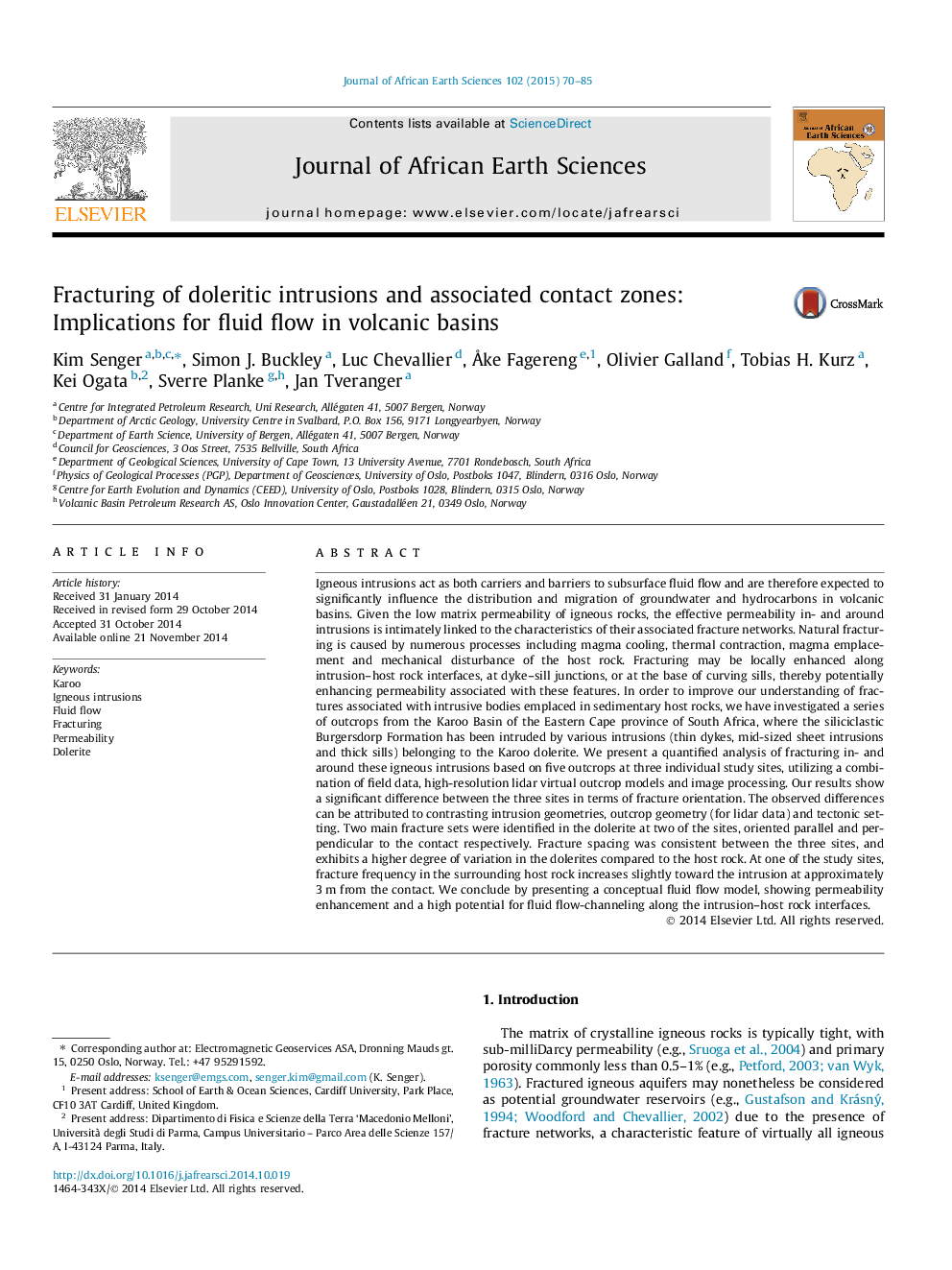| کد مقاله | کد نشریه | سال انتشار | مقاله انگلیسی | نسخه تمام متن |
|---|---|---|---|---|
| 4728613 | 1640205 | 2015 | 16 صفحه PDF | دانلود رایگان |
• Fracturing is the primary control on permeability in igneous rocks.
• Fracture aperture, connectivity and density describe a fracture network.
• Fracturing is mapped at outcrops using field methods and lidar data.
• Fractures are subdivided based on formation mechanism and chronology.
• Enhanced fracturing complexity is found at intrusion–host rock interfaces.
Igneous intrusions act as both carriers and barriers to subsurface fluid flow and are therefore expected to significantly influence the distribution and migration of groundwater and hydrocarbons in volcanic basins. Given the low matrix permeability of igneous rocks, the effective permeability in- and around intrusions is intimately linked to the characteristics of their associated fracture networks. Natural fracturing is caused by numerous processes including magma cooling, thermal contraction, magma emplacement and mechanical disturbance of the host rock. Fracturing may be locally enhanced along intrusion–host rock interfaces, at dyke–sill junctions, or at the base of curving sills, thereby potentially enhancing permeability associated with these features. In order to improve our understanding of fractures associated with intrusive bodies emplaced in sedimentary host rocks, we have investigated a series of outcrops from the Karoo Basin of the Eastern Cape province of South Africa, where the siliciclastic Burgersdorp Formation has been intruded by various intrusions (thin dykes, mid-sized sheet intrusions and thick sills) belonging to the Karoo dolerite. We present a quantified analysis of fracturing in- and around these igneous intrusions based on five outcrops at three individual study sites, utilizing a combination of field data, high-resolution lidar virtual outcrop models and image processing. Our results show a significant difference between the three sites in terms of fracture orientation. The observed differences can be attributed to contrasting intrusion geometries, outcrop geometry (for lidar data) and tectonic setting. Two main fracture sets were identified in the dolerite at two of the sites, oriented parallel and perpendicular to the contact respectively. Fracture spacing was consistent between the three sites, and exhibits a higher degree of variation in the dolerites compared to the host rock. At one of the study sites, fracture frequency in the surrounding host rock increases slightly toward the intrusion at approximately 3 m from the contact. We conclude by presenting a conceptual fluid flow model, showing permeability enhancement and a high potential for fluid flow-channeling along the intrusion–host rock interfaces.
Figure optionsDownload as PowerPoint slide
Journal: Journal of African Earth Sciences - Volume 102, February 2015, Pages 70–85
